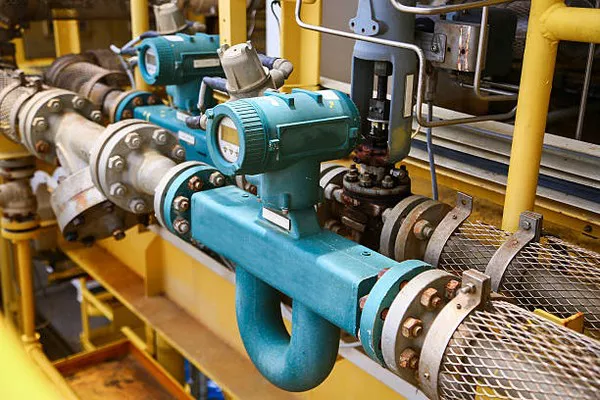Flow measurement is a critical aspect of various industrial processes, including manufacturing, oil and gas production, and chemical processing. Accurate flow measurement is essential for optimizing processes, ensuring product quality, and managing resources efficiently. One of the reliable and widely used flow measurement technologies is the vortex type flow meter. In this article, we will delve into the principles, applications, and advantages of vortex type flow meters.
The Principles of Vortex Type Flow Meters
Vortex type flow meters, also known as vortex shedding flow meters or vortex flowmeters, operate on the principle of the von Kármán effect, which was first described by the Hungarian-American physicist and engineer Theodore von Kármán in the early 20th century. This effect occurs when a fluid flows past a bluff body (often referred to as a shedder bar or bluff bar) inserted into the flow path. As the fluid flows around the bluff body, it creates alternating vortices on either side of the object. These vortices detach from the bluff body and form a distinctive pattern downstream.
The frequency at which vortices are shed is directly proportional to the velocity of the fluid, the geometry of the bluff body, and the fluid’s properties such as density and viscosity. By measuring the frequency of these vortices, vortex type flow meters can accurately determine the flow rate of the fluid passing through the meter.
Components of Vortex Type Flow Meters
Vortex type flow meters consist of several key components, each playing a crucial role in accurate flow measurement:
Bluff Body: The bluff body is the primary component responsible for creating vortices in the fluid flow. It is typically a solid, geometrically shaped object that is inserted into the flow path perpendicular to the direction of flow. The shape and size of the bluff body affect the performance and sensitivity of the flow meter.
Sensor: A sensor is used to detect the vortices created by the bluff body. Common sensor types include piezoelectric sensors, capacitive sensors, or strain gauges. These sensors convert the vortex-induced vibrations into electrical signals.
Signal Conditioning and Processing Electronics: The electrical signals generated by the sensor are conditioned and processed to determine the frequency of the vortex shedding. This frequency is directly related to the flow rate of the fluid.
Display/Output: The flow rate data is typically displayed on a local indicator or transmitted to a control system or data acquisition system for further processing and monitoring.
Applications of Vortex Type Flow Meters
Vortex type flow meters find applications in a wide range of industries due to their versatility and reliability. Some of the notable applications include:
Industrial Process Control: Vortex flow meters are commonly used for measuring the flow of various liquids and gases in industrial processes. They are employed in industries such as chemicals, pharmaceuticals, food and beverage, and water treatment for precise flow measurement and control.
Petrochemical and Oil & Gas: In the petrochemical and oil and gas industries, vortex type flow meters are used to measure the flow of crude oil, natural gas, and various hydrocarbon products. Their durability and accuracy make them ideal for these demanding environments.
Utilities: Vortex flow meters are utilized in utility applications to measure the flow of water, steam, and other fluids in water treatment plants, power generation facilities, and HVAC systems.
Aerospace: Vortex type flow meters are used in aerospace applications to measure fuel flow in aircraft engines, ensuring accurate fuel consumption data for flight planning and maintenance.
Environmental Monitoring: They are used in environmental monitoring systems to measure the flow of gases and liquids in air quality monitoring and pollution control applications.
Advantages of Vortex Type Flow Meters
Vortex type flow meters offer several advantages that make them a popular choice for flow measurement:
Wide Range of Measurement: Vortex flow meters can accurately measure a wide range of flow rates, from low to high velocities, making them versatile for various applications.
Minimal Maintenance: These meters have no moving parts in contact with the flowing fluid, reducing wear and minimizing the need for maintenance. This results in long-term reliability and reduced operational costs.
High Accuracy: Vortex flow meters provide excellent accuracy, typically within a range of 1-2% of the actual flow rate. This level of precision is crucial in industries where product quality and process efficiency are paramount.
Compatibility: Vortex flow meters can handle various fluids, including gases and liquids, without requiring extensive recalibration, making them adaptable to changing process conditions.
Wide Temperature and Pressure Range: Vortex flow meters can operate in a broad range of temperatures and pressures, making them suitable for extreme environments.
Digital Communication: Many modern vortex flow meters come equipped with digital communication protocols, such as HART or Modbus, allowing seamless integration with control systems and enabling remote monitoring and data logging.
Low Pressure Drop: Vortex flow meters typically have a low-pressure drop, minimizing the energy required to move fluids through the meter.
Conclusion
Vortex type flow meters are a reliable and widely used technology for measuring the flow of fluids in various industrial applications. Their principle of operation, components, and advantages make them a valuable tool for process control, product quality assurance, and resource management. As industries continue to demand accurate flow measurement solutions, vortex type flow meters will remain a vital instrument in achieving these objectives while ensuring cost-effectiveness and reliability in fluid flow measurement.

